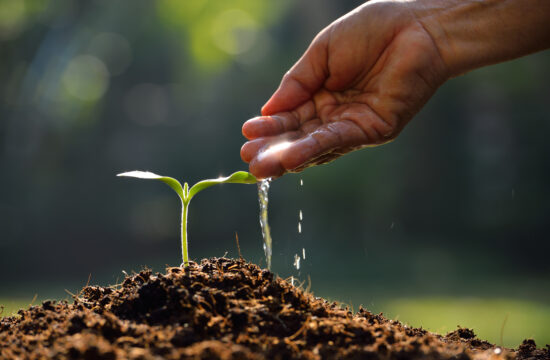Water conservation is essential for the sustainability of agriculture and the preservation of vital water resources. Adopting effective conservation strategies can help farmers minimize water usage, mitigate water scarcity, and promote ecological balance.
In today’s world, with a growing population and increasing water stress, the agricultural sector must prioritize water conservation. Safe Zone™ is effective in implementing efficient irrigation methods like drip irrigation or precision sprinklers that can reduce water loss and ensure water is delivered directly to plant roots. Read on to learn more about various water conservation techniques.
Importance of Water Conservation in Agriculture
Water conservation in agriculture is vital for preserving limited water resources, mitigating water scarcity, and ensuring sustainable food production. Adopting efficient irrigation methods and water-saving techniques can help farmers optimize water usage, reduce environmental impact, and maintain the long-term viability of agricultural systems.
Sustainable Resource Management
Agriculture accounts for a significant portion of global freshwater withdrawals, making it necessary to conserve water and establish other sustainable use practices to ensure the availability of this vital resource for future generations.
Mitigating Water Scarcity
Water scarcity is becoming a growing concern in many regions, exacerbated by population growth, climate change, and competing water demands. Efficient water conservation practices in agriculture help reduce the pressure on limited water supplies and mitigate the impacts of water scarcity on both agricultural production and ecosystems.
Enhancing Agricultural Productivity
Water is an essential component for crop growth and livestock production. Adopting water conservation techniques can help farmers optimize water usage and ensure crops receive adequate moisture while reducing wastage. Optimizing water usage enhances agricultural productivity, leading to increased yields and improving food security.
Different Techniques Used for Water Conservation
Efficient Water Use in Agriculture
Efficient water use in agriculture refers to practices and techniques that aim to maximize the productivity of crops while minimizing water consumption. It involves employing methods such as capturing and storing water and drip irrigation to deliver water directly to the plant roots, reducing losses due to evaporation or runoff. Learn more about these techniques below.
Drip Irrigation
Drip irrigation is a highly efficient technique that delivers water directly to the plant roots. This method minimizes water loss through evaporation and runoff. Drip irrigation relies on a network of tubes or pipes with small emitters that release water at a steady pace. This technique significantly reduces water wastage and promotes better plant health by providing water precisely wherever necessary.
Additionally, drip irrigation helps to minimize weed growth and disease incidence, as the foliage remains dry. Drip irrigation systems can be tailored to suit various crop types, soil conditions, and topographies, making them a versatile and sustainable choice for water-efficient agriculture.
Capturing and Storing Water
Capturing and storing water is a crucial strategy for sustainable water use in agriculture. This technique involves collecting and storing rainwater, surface runoff, and even treated wastewater for later use in irrigation.
Farmers can use various methods to capture water, such as constructing ponds, reservoirs, or tanks to store the collected water. During droughts or dry periods when water availability is limited, these stored water sources can provide plants with moisture when needed.
Implementing such systems conserves water and provides farmers with a reliable water supply, reducing their dependence on scarce freshwater resources.
Irrigation Scheduling
Efficient water use in agriculture also involves proper irrigation scheduling, which entails determining the optimal timing and frequency of irrigation to meet crop water requirements while minimizing water wastage.
This technique accounts for crop type, growth stage, soil moisture levels, and weather conditions. Farmers can use advanced technologies like soil moisture sensors and weather forecasts to precisely monitor the moisture content of the soil and make informed decisions about when to irrigate.
Irrigation scheduling ensures crops receive adequate water without overwatering, leading to improved water-use efficiency and optimized yields.
Enhancing Soil Health for Water Conservation
Enhancing soil health for water conservation involves implementing practices that improve the soil’s structure, fertility, and moisture-holding capacity, promoting efficient water use and conservation. This includes strategies like:
Compost and Mulch
Compost and mulch improve soil health and reduce water loss through evaporation. Compost, a mixture of decomposed organic matter, is applied to the soil to enhance its structure, water-holding capacity, and nutrient content. Adding compost makes the soil more porous and helps it retain water, reducing the need for frequent irrigation.
Mulching involves covering the soil surface with organic material, such as straw, wood chips, or leaves. This layer acts as a protective barrier, preventing water evaporation and reducing weed growth, thus conserving soil moisture. The combined use of compost and mulch significantly enhances soil health, promotes water infiltration, and minimizes water requirements.
Dry Farming
Dry farming is a technique that relies on natural rainfall and moisture stored in the soil without irrigation. It is particularly suitable for regions with limited water resources. Dry farming employs specific practices like strategic planting, soil preparation, and crop selection to encourage root growth and maximize water absorption from rainfall.
This farming technique emphasizes the importance of conserving soil moisture through reduced tilling, soil mulching, and the use of drought-tolerant crop varieties.
Cover Crops
Cover crops are non-commercial crops grown primarily to protect and enhance the soil between main crop seasons. These crops, such as legumes, grasses, or clovers, are planted to prevent erosion, improve soil structure, and increase organic matter content.
Cover crops are vital to water conservation. They play an essential role by reducing surface runoff, increasing water infiltration, and minimizing soil evaporation. Their extensive root systems enhance soil water-holding capacity and nutrient retention. Incorporating cover crops into crop rotation systems can significantly improve soil health, conserve water, and mitigate the impacts of drought and heavy rainfall events.
Conservation Tillage
Conservation tillage practices involve minimizing soil disturbance during planting and cultivating crops. Reducing or eliminating traditional plowing or intensive tillage, coupled with the use of Aqua-Pam™ can be very helpful in preserving soil structure, organic matter, and beneficial soil organisms.
This practice enhances water conservation by improving soil infiltration and reducing erosion. The undisturbed soil becomes a natural barrier, preventing water runoff and promoting water retention in the root zone. Conservation tillage reduces water and contributes to improved soil health and nutrient cycling.
Optimizing Crop Performance through Water-Smart Practices
Optimizing crop performance through water-smart practices involves implementing strategies that enhance water use efficiency and maximize the productivity of crops. This includes employing techniques such as:
Crop Rotation
Crop rotation is a practice that involves growing different crops in a specific sequence on the same piece of land over time. This technique offers several benefits for optimizing crop performance and water use efficiency.
For example, alternating between water-demanding crops and more drought-tolerant crops allows the soil to replenish moisture levels during periods of lower water demand. Crop rotation also helps break pest and disease cycles, reducing the need for chemical interventions and further enhancing crop health.
Water-Conserving Plants
Another approach to optimizing crop performance and water efficiency is by planting water-conserving plants. Water-efficient crops are specially selected or bred for their ability to thrive in water-limited conditions. They have evolved mechanisms such as deep root systems, reduced transpiration rates, or efficient water uptake to withstand droughts and periods of limited water availability.
Incorporating water-conserving plants into agricultural practices optimizes water usage and offers several other advantages. By diversifying crop selection and utilizing water-efficient varieties, farmers can mitigate the impacts of climate change, including increased water variability and unpredictable weather patterns.
Utilize Verdesian Water Retention Products
Verdesian’s water retention products, Safe Zone™ and Aqua-Pam™, are valuable solutions for water conservation in agriculture.
Safe Zone™ effectively reduces soluble salts in the root zone, enhancing germination, water percolation, and nutrient uptake. It can be used in all irrigation systems to disperse accumulated salts below the root zone, increasing yield potential.
Aqua-Pam™ improves soil structure, increases water supply to plant roots, and boosts irrigation efficiency. By enhancing water infiltration, it protects against water stress and improves plant growth. It also aids in erosion control, soil conditioning, and increasing water-holding capacity. Incorporating these products helps farmers manage water resources, promote sustainability, and optimize crop yields.


